Thanks to our recent podcast with Dr. Barrie Tan, we now have a better understanding of the biological building-block Geranylgeraniol ("GG", sold as GG-Gold). Consequently, PricePlow followers have shown increased interest in new formulas containing the ingredient.
This crucial molecule, sold by American River Nutrition, is used to produce vitamin K2 MK-4, coenzyme Q10, and various proteins. Towards the end of our podcast with Dr. Tan, we hypothesized unique use-cases for GG, envisioning formulas and supplement categories where this versatile ingredient hasn't been utilized.

For PricePlow Formulator's Corner #12, we explore five different product categories where GG-Gold (Geranylgeraniol) can be used as a building block in sports nutrition and health applications
This is a perfect opportunity for a Formulator's Corner post, where we present hypothetical formulas we'd love to see on the market. Instead of focusing on one formula with an in-depth look at each ingredient, we've created several use cases for GG-Gold in today's article.
Formulator's Corner #12: New Use Cases for GG-Gold
As a building block, GG-Gold can serve numerous purposes in a supplement stack. It's an ingredient every brand should use; the only question is, where to employ it. This article covers the following potential uses for GG-Gold:
- Natural Testosterone Booster
- Total Muscle Builder
- Anabolic Feel-Good Pre-Workout
- Enhanced Vitamin D3/K2 Formula
- Novel Gut Health Supplement
These proposed, hypothetical formulas do not currently exist and are free for the taking. The goal isn't for a brand to use all of them but to pick one and integrate GG-Gold into the stack where it best fits their customer base.
Before we dive in, sign up for our GG-Gold and American River Nutrition news alerts, and let's dive into each one:
Subscribe to PricePlow's Newsletter and Alerts on These Topics
-
Natural Testosterone Booster with GG
Codename: GG-Boost
-
GG-Gold - 300mg
Our GG-Gold testosterone booster formula uses GG as a building block, then hits a few pathways to support healthy testosterone production.
New data shows that geranylgeraniol can boost free testosterone in those with low levels, as evidenced by a study[1] following up two preclinical trials.[2,3] It's time to incorporate it into a natural testosterone booster. This is a product category that's gotten a bit stale... until now.
Here are a few mechanistic reasons why GG is useful for boosting testosterone:
- GG has been shown to stimulate steroidogenesis via the cAMP/PKA pathway.[2] This pathway is stimulated after luteinizing hormone (LH) binds to the LH receptor, which then activates proteins that are needed for testosterone synthesis downstream.
- GG has the ability to increase steroidogenic acute regulatory protein (StAR) expression.[2] StAR regulates cholesterol transport and is a rate-limiting steroidogenesis step in Leydig cells.[4]
-
GG is a side-chain of vitamin K2 MK-4,[5] which has been shown to increase testosterone in animal studies.[6] Most testosterone boosters don't include Vitamin K-2, but this is a great way to support its endogenous development.
With these mechanisms known, we can focus on alternative pathways to synergize with GG-Gold.
-
Zinc (as Zinc Picolinate) - 25mg (227% DV)
Zinc picolinate gets a significantly greater amount of zinc into the hair,[7] which is a great way of determining that it's made its way through the body.
As a cofactor in countless biochemical processes, zinc is indispensable. In the context of testosterone, zinc is considered the "master mineral of the endocrine system", with a strong correlation between serum zinc levels and serum testosterone.[8,9]
It plays a major role in converting dihydrotestosterone (DHT) to testosterone.[10] Zinc also acts as a strong antagonist to copper,[11] an estrogenic mineral.[12,13]
Research supports using zinc to boost testosterone,[9,10,14-16] with two of the studies even finding increases in free testosterone.[14,16]
When it comes to the type of zinc, we consistently see the best results (in terms of both serum zinc and hair mineral analysis) from zinc picolinate.
-
Fenugreek Extract (std. 50% Saponins) - 500mg
Numerous studies show that fenugreek can improve both total and free testosterone while supporting libido, strength, and body composition.[17,18] It mainly works as an aromatase inhibitor,[19] preventing the enzyme from converting testosterone away to estrogen. It also acts as a 5α-reductase inhibitor, which may preserve testosterone.
-
Tesnor - 400mg
Tesnor, a proprietary blend of pomegranate peel and cocoa bean extracts, has at least two human studies showing improved free testosterone and strength increases.[20,21]
-
Bororganic Glycine - 10mg
Boron is added to test boosters due to a small study showing it can boost free testosterone while reducing estrogen.[22] However, we'd like to see this replicated on a larger scale.
Additional comments and ideas
Many other botanical ingredients can be considered. We're big fans of PLT Health's RipFACTOR, which has two human clinical trials, and Aura Scientific's ProtoTest as a new wildcard. However, brands can only include so many trademarked ingredients, so a decision must be made on which ones to use.
Regardless, we believe in providing building blocks, similar to providing protein and amino acids in a diet. That's why GG-Gold is included here for savvy sports nutrition brands.
-
-
Total Muscle Builder
Codename: BuildinGG Blocks
Every brand needs a creatine supplement -- how will yours be different?
Here, we lean on American River's Daniel DeMarino, who uses GG-Gold in his personal daily stack as follows:
-
Creatine Monohydrate - 5g
Someone needs to make this creatine supplement, with both GG-Gold and myHMB inside. Bonus points for adding betaine anhydrous!
The tried-and-true ATP booster supports basically everything muscle-related and more. It's backed by numerous meta-analyses for both muscle health[23-27] and cognitive health.[28,29]
-
myHMB - 3g
TSI Group's myHMB is the premier form of HMB (β-hydroxy β-methylbutyrate) on the market. Extensive research showing that the leucine metabolite activates mTOR,[30] assisting muscle protein synthesis and keeping the body in an anti-catabolic state. It also upregulates growth hormone[31] and stimulates mitochondrial biogenesis.[32]
A meta-analysis showed that HMB is especially effective in older adults.[33] At some point, there's only so much leucine you can ingest, and adding HMB gets the potent metabolite directly.
-
GG-Gold - 300mg
As discussed in PricePlow Podcast Episode #140 with Dr. Barrie Tan, GG is an endogenous nutrient required for muscle building. It has potential anti-catabolic effects,[34] mainly through inhibition of Atrogin-1,[35] which we're still exploring.
Additionally, GG should increase intracellular CoQ10,[36] which should increase ATP reserves -- this would work synergistically with creatine's main mechanism of action.
Digging into the Atrogin-1 effect, we hypothesize the following:
- GG may reduce muscle breakdown by lowering the levels of certain proteins (ubiquitin ligases) involved in muscle atrophy.[34]
-
Dr. Barrie Tan, founder of Amerian River Nutrition, joins The PricePlow Podcast for Episode #140 to explain how GG-Gold (Geranylgeraniol) Supports Muscle Tissue!
GG promotes muscle growth by encouraging muscle cells to mature and develop into stronger muscle fibers without negatively affecting their growth.[34]
- GG may protect muscle size by preventing muscle shrinkage caused by glucocorticoids, a type of steroid that can lead to muscle loss.[37] Glucocorticoids increase Atrogin-1 expression,[35] but GG may counteract this.
This is all on top of GG's ability to protect against statin-associated muscle symptoms (SAMS).[38]
These are mechanisms that still need to be tested, but the underlying science is sound, and GG is a compound you don't want your body to go without when trying to make gains.
Additional comments and ideas
One additional ingredient that could be added is betaine anhydrous, but it's in most pre-workout formulations these days, so it could just reside there.
PricePlow's Request: A GG-Gold + myHMB Clear Softgel
Another interesting idea we propose: American River Nutrition can help brands develop softgels to create a softgel-based builder made from myHMB Clear (HMB free acid) and GG-Gold (which can be concentrated in a 75% oil). That is the HMB muscle-building product we've really been waiting for, and we'll be very excited to see it come to life.
-
-
Anabolic Feel-Good Pre-Workout
Codename: GG-Pre-Good
We're going for a feel-good pre-workout with an anabolic edge. There are so many directions a pre-workout can go, but here's our mix of both novel and tried-and-true ingredients:
-
Citrulline Malate / Nitrosigine
Obviously a ton of things can be changed here in this pre-workout, but the point is to have one that supports muscle and does some extremely different things. This formula, as is, would likely cost too much, but we can dream!
Choose your dose, depending on what kind of pumps you want to chase and if you're planning a stim-free version.
-
Beta-Alanine - 4g (or 0g)
Go big or go home! If you're chasing endurance, you might as well get carnosine to saturation faster. But if not, then you could differentiate with a beta-alanine-free version, although pre-workouts with BA do seem to sell better.
-
Betaine Anhydrous - 2.5g
Too much quality research to ignore![39-41] This could also be added to the muscle builder, as discussed above. At least 2.5 grams, but preferably 5 grams total, belongs in every brand's overall main stack.
-
GG Gold - 300mg
See the above comments regarding muscle preservation with GG-Gold.
-
enfinity Paraxanthine - 300mg
Why use caffeine when you can use 300 milligrams of the good stuff?! Remember, we're going for a feel-good formula here, not a massive jitter-bomb. Brands are always free to use their favorite caffeine blends, though.
-
Cognizin Citicoline - 250mg
Geranylgeraniol (GG), sold as GG-Gold by Dr. Barrie Tan's American River Nutrition, is an essential nutrient that's used as a side-chain in Vitamin K2 and is critical for biological functions including CoQ10 production, testosterone, muscle mass, bone health, gut health, and more!
This is the first focus component for the ingredient, and what we consider to be the one experiential form of choline. At ISSN 2024, we hypothesized that Cognizin feels good not only because it may promote dopamine, but because it likely spares ATP when taken exogenously instead of relying on your body to create it endogenously.
But we're adding even more experience with this last ingredient:
-
SalidroPure - 30mg
Yes, this is pure salidroside, coming soon from NNB Nutrition. Just wait until you get your hands on this one...
We've seen a lot of pre-workout formulas out there, but there's simply nothing on the market like this one.
Comments and Ideas
There are too many pre-workouts that all look the same these days. The goal is to make something that works both acutely and over the course of the month.
With this formula, we got away from the taurine/tyrosine combo seen in so many products lately, avoided cheap forms of choline, and leaned into some novel ingredients -- including GG, which someone needs to put into a muscle-building pre-workout.
-
-
Enhanced Vitamin D3/K2 Formula
Codename: StoneStopper-GG
Nearly every brand's got a Vitamin D3 formula, but none like this.
First, let's establish two things:
-
Vitamin D3 promotes calcification
We've recently shown greater public concern over the use of vitamin D3 (cholecalciferol) without the use of Vitamin K2 alongside it.
Reason being, vitamin D3 is a fat-soluble alcohol known to increase calcium absorption[42] and cause hypercalcaemia.[43-45] This is a condition where serum calcium levels become extremely high, often from bone resorption (the calcium is stripped from bone tissue). Such bone loss increases risk of fractures, cardiovascular disease, and osteoporosis.[46-48]
For instance, in one study, women taking both calcium and vitamin D had a 24% higher risk of heart attack,[49] and another showed 17% greater risk for urinary stones with the combination.[50]
Simply put, more caution needs to be considered before megadosing vitamin D3 / cholecalciferol, especially when supplementing calcium alongside it -- there's too much evidence indicating the calcification of soft tissue.[51-53]
The topic of calcification is also discussed at the end of our podcast with Dr. Barrie Tan.
-
Vitamin K2 may prevent calcification
Vitamin K, however, is a cofactor in the process of bone remineralization by supporting the carboxylation of osteocalcin.[54-58] This is why Vitamin K2 generally has a positive effect on lumbar spine bone mineral density.[54]
The chemical structure of Geranylgeraniol (GG), vs. that of MK-4 (vitamin K2).[59] As you can see, GG accounts for a large part of the MK-4 molecule.
A 2020 meta-analysis showed that vitamin K and vitamin D combined significantly increase total bone mineral density, concluding that "a more favorable effect is expected when vitamin K2 is used."[60] An earlier meta-analysis also showed reduced fracture in Japanese patients.[61]
There are also many concerns with vitamin K deficiency, especially for those who eat processed food, where it's nearly nonexistent.[62] So one can argue that when it comes to bone supplements, we've been treating the wrong variable - most people need more K and better K production!
The strategy
With this in mind, we want to do the following:
- Keep vitamin D3 at a reasonable dose
- Throw everything we can at the Vitamin K angle
The second point means adding GG-Gold to the formula! Reason being, GG is a side-chain of vitamin K2 MK-4, and taken together, they inhibit osteoclast formation through different mechanisms![5] GG itself should increase vitamin K2 by generating more GGPP (geranylgeranylpyrophosphate).[63]
Beyond that, animal data from a study measuring gut health (which will be discussed in our next formula) demonstrated greater bone strength and improved bone tissue architecture in animals given GG.[64] So anyone using K2 for bone health should also consider GG-Gold.
How do you best prevent the calcification that vitamin D3 is known to cause? You keep the dose low, and you push hard on the vitamin K2 lever -- which includes adding GG-Gold!
Thus, our final formula becomes:
-
GG-Gold - 150mg
-
Vitamin K2 (as menaquinone-4) - 120mcg (100% DV)
-
Vitamin D3 (as cholecalciferol) - 20mcg / 800IU (100% DV)
This allows your brand to have a vitamin D supplement while doing your best to prevent further hypercalcaemia.
Additional thoughts and ideas
As always, however, sunshine (or even using a UV-B sun lamp) is the best way to "get" your vitamin D. With that strategy in mind, we can avoid the cholecalciferol-calcification situation and consider only taking K2 and GG-Gold.
Geranylgeraniol is a side chain of CoQ10, so it accounts for only part of the CoQ10 molecule, and, naturally, has a much smaller molecular weight.[65]
But for brands whose consumers don't understand these issues and still demand a D3 supplement, we can at least provide one that's as protective as possible with a formula like this.
The last thing we could consider here is another ingredient from American River Nutrition, DeltaGold (at 50mg). This is their original ingredient -- DeltaGold consists of tocotrienols, a form of Vitamin E that supports cardiovascular, cholesterol, and metabolic health. We'll be covering DeltaGold in future PricePlow content.
-
-
Novel Gut Health Supplement
Codename: GG-Gut
One thing we haven't covered yet is GG's ability to support gut health!
-
GG-Gold - 300mg
GG-Gold can also help with gut health! Here's a capsule-based gut health supplement that will get things moving in the right direction.
What's geranylgeraniol doing in a gut health formula? The data comes from two animal studies performed in 2021 and 2022 (both covered in our GG-Gold article's Microbiome and Metabolic Health section), where GG was able to improve gut microbiome composition and reduce inflammatory cytokines on top of the improved bone health.[64]
In a follow-up study, GG led to a quite profound increase in various beneficial probiotic bacteria, all while reducing harmful bacteria.[66] The animals receiving GG had body composition improvements as well.
-
Zinc L-Carnosine (as PepZin GI) - 75mg yielding 16mg zinc (110% DV)
Zinc L-Carnosine isn't just here to increase serum zinc levels like zinc picolinate does in our testosterone booster -- it's here to support healing in the gut! Bound to L-carnosine, PepZin GI is designed to prolong the amount of time it stays within the stomach, keeping the compound there longer to deliver their benefits.
A 2020 review covered zinc L-carnosine's tremendous benefits for various gastrointestinal disorders, oral mucositis, taste disorders, and ulcers.[67]
Both Geranylgeraniol (GG) and GTP had a positive impact on the mice's microbiome, as did a combination of both substances.[66]
Too many gut health supplements don't have this, and brands need to think strategically about where they want the most of their users to get their zinc, which is too important to ignore.
-
Deglycyrrhizinated Licorice (DGL) Extract (root) - 400mg
Licorice has long been used for gut health, but there's one issue with it -- a bioactive compound named glycyrrhizin that increases cortisol and reduces testosterone. By removing it, you're left with deglycyrrhizinated licorice, which has been shown to:[68-73]
Supplementation with Geranylgeraniol (GG) also decreased the relative abundance of dysbiotic (bad) bacteria.[66]
- Reduce nausea
- Reduce ulcers
- Improve gut mucosal lining
- Increase intestinal cell lifespan
There's more to it, but these are some of the primary benefits, and it definitely beats licorice on its own!
-
Lactoferrin - 200mg
Lactoferrin is an iron-binding protein found in milk, especially important for babies,[74-76] but it's also made by our own cells. While it's incredibly beneficial for the immune system in adults as well,[77] it's also growing in popularity because of its protective overall health benefits.[78]
That's great, but why put it in a gut health supplement? The main reason is because it improves the overall gut microbiome composition[79] and supports the liver by repairing bile ducts.[80] When bile can't properly flow down into stool (triggering bowel movements), everything else goes wrong. For instance, bile acids that have spilled over into the gut are highly connected with GERD and other gut disorders.[81,82]
Beyond that, lactoferrin helps break down biofilms,[83] transports zinc,[84] and binds to free copper and iron[85] -- all great things.
-
Aloe Vera (inner leaf, 200:1) - 100mg
Aloe Vera is here to support those who suffer from IBS.[86] It's long been used in traditional medicine for these purposes, and has anti-inflammatory, anti-ulcerative, hepatoprotective benefits.[87] It supports intestinal motility,[88] so the dosing would need to be tested between this and lactoferrin.
-
DE111 (Bacillus subtillis) 1 Billion CFU (10mg)
A gut supplement needs to have a great probiotic strain! This suggestion came from American River Nutrition's Daniel DeMarino, who said, "Coming from working on DE111 for 8 years, it is a must have in any digestive health formula."
For decades, Dr. Barrie Tan has been the universal expert on all things annatto -- including geranylgeraniol and tocotrienols
It looks like he was right. Recent research published in 2023 shows that DE111 has benefits for digestion, metabolism, and immune health that begin within hours.[89] It's well-tested in both children and adults, showing bowel movement improvements,[90] reduced serum glucose levels,[91] a healthy gut microbiome and gastrointestinal tract in children,[92,93] and potentially even improve body composition in athletes.[94]
A landmark trial shows that it actually viably makes it to and through the gut and germinates in the small intestine![95,96]
DE111 was popularized in Ghost Greens and seems to be one of the most well-vetted and unique commercial probiotic strains, with its incredible stability. It's highly antimicrobial against E. coli, staph, other pathogens, beneficially modulates the microbiome, and produces several beneficial enzymes and metabolites.[97]
Comments
There are obviously a ton of directions a gut health supplement can be taken, but once again, building blocks are paramount. Probiotics aren't the only building blocks either -- GG is one such ingredient that can be utilized in this fashion.
So we like to look beyond probiotics and digestive enzymes, and work to support the liver as well. After all, this organ is the seat of all health, and if it fails, it's game over. If we can improve its condition while also boosting zinc levels -- which will have tons of other benefits -- then we've accomplished an incredible job for the entire body.
-
A new frontier for GG-Gold
GG-Gold originally entered the market as an ingredient to support coenzyme Q10 production. That makes sense -- it's a side-chain of the CoQ10 molecule, and supports statin-associated muscle symptoms (SAMS)[38] when CoQ10 hasn't done as well as originally hoped.[98] The CoQ10 market is enormous, so it's a smart, common-sense entry for an ingredient.
Given GG's status as an endogenous building block whose production diminishes with age, there's much more that can be done with it. This article gives formulators and savvy supplement stack builders some new places to try it -- and as a company that focuses on performance and sports nutrition, we love to look at the testosterone and muscle angles as well.
Additionally, GG can be used to protect soft tissue by preventing calcification and to support gut health.
As a building block ingredient, we see research eventually showing universal benefits -- just like we do with diets high in protein / essential amino acids, creatine, zinc, ATP, and magnesium. GG belongs in that same conversation.
So, if you're a brand, the question is no longer a matter of "if" -- it's where you put it in your stack.
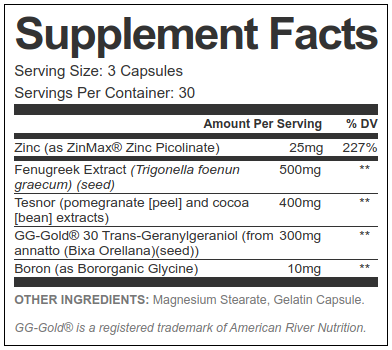

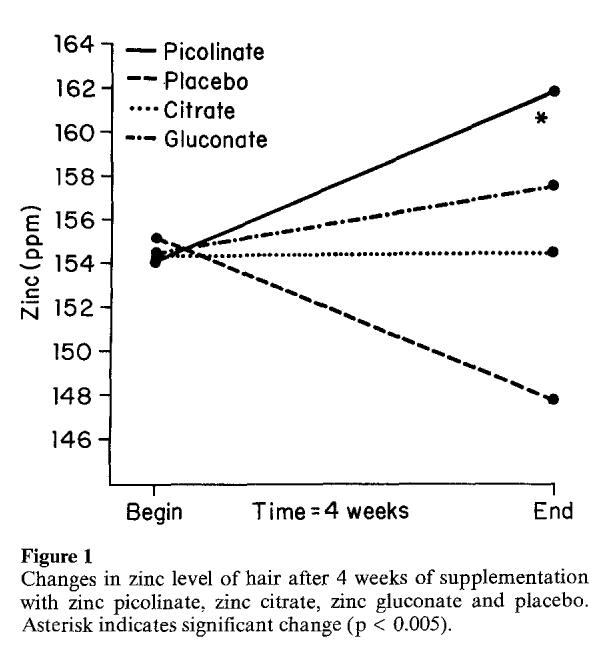
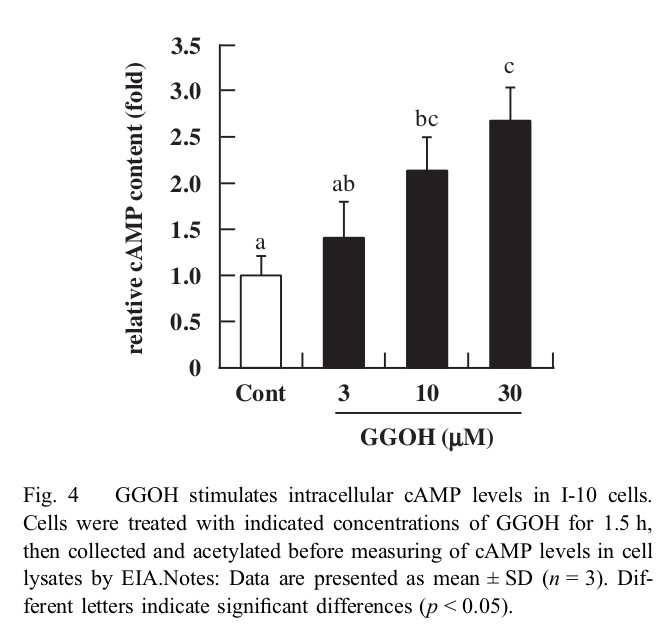
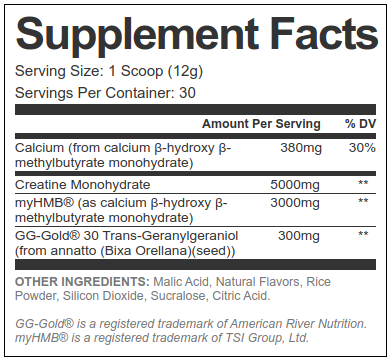
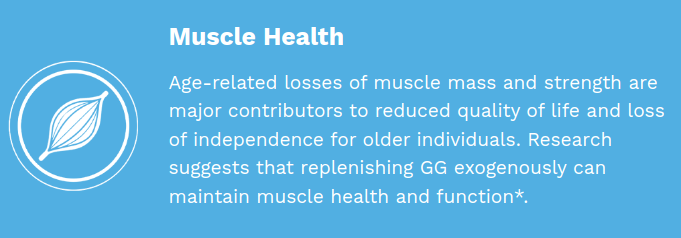
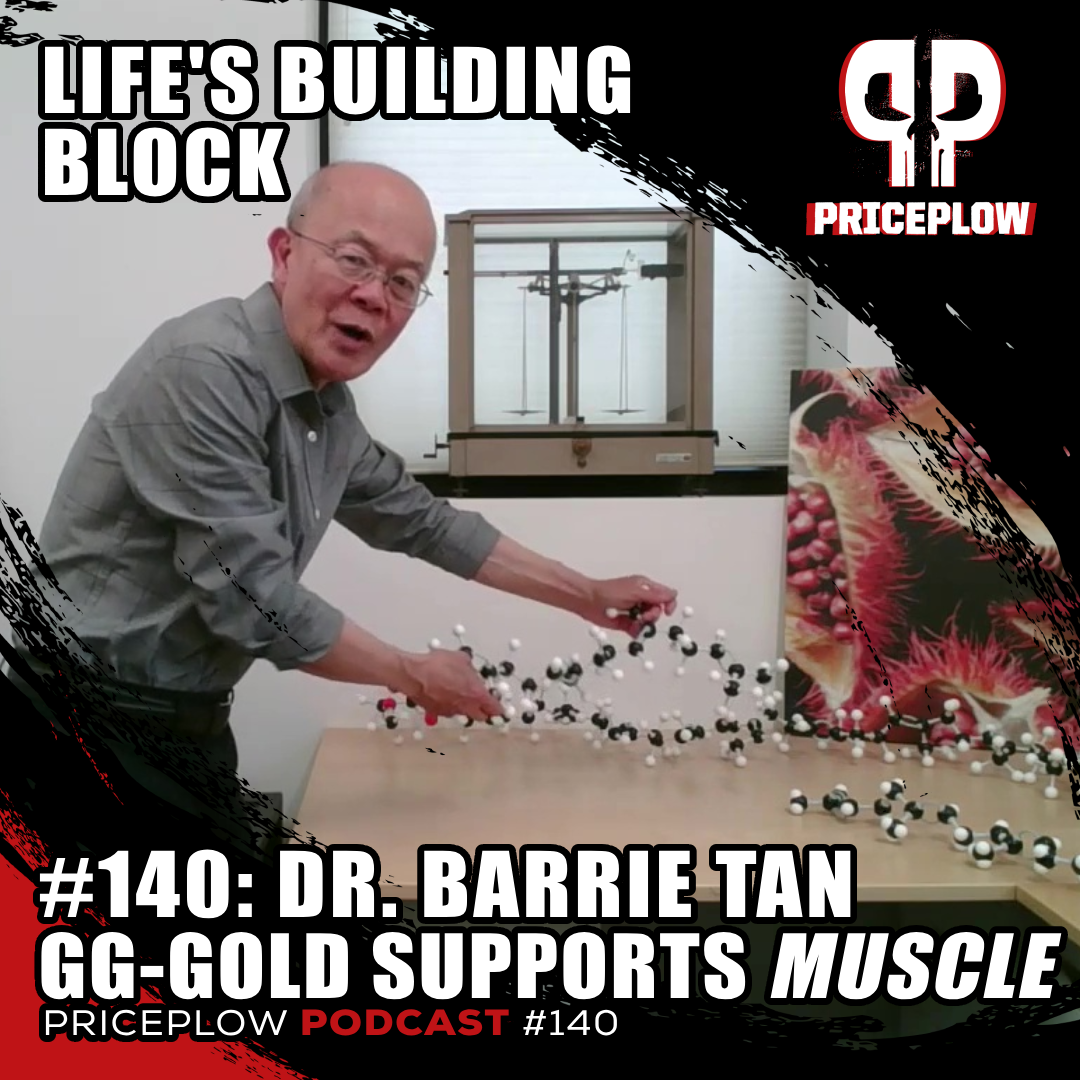

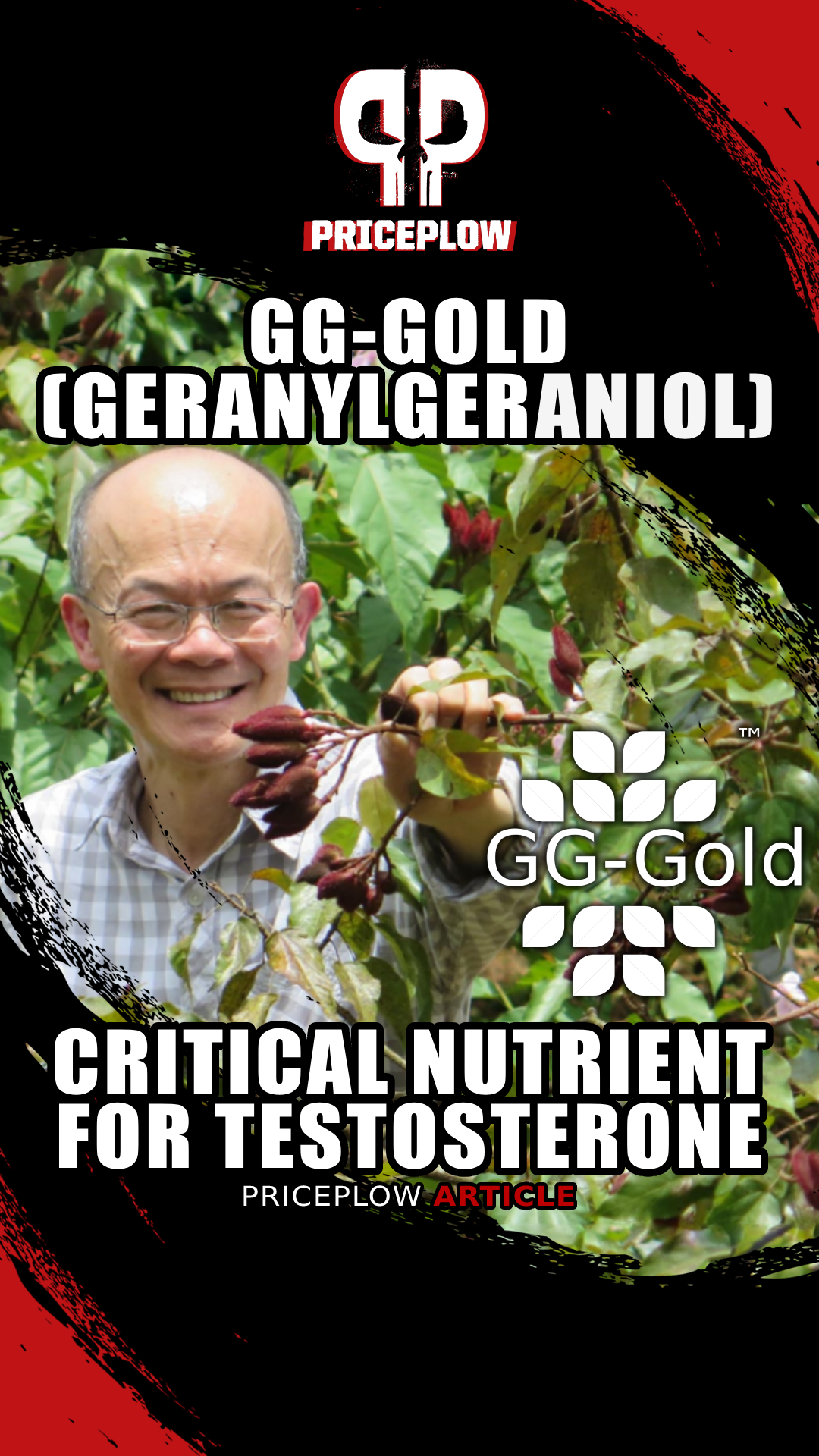
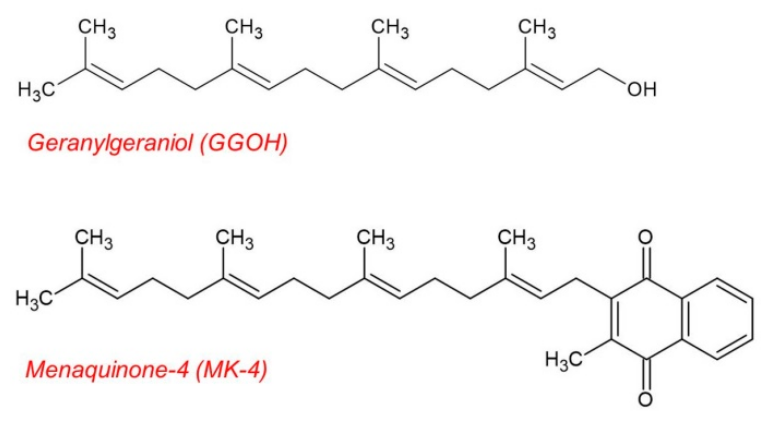







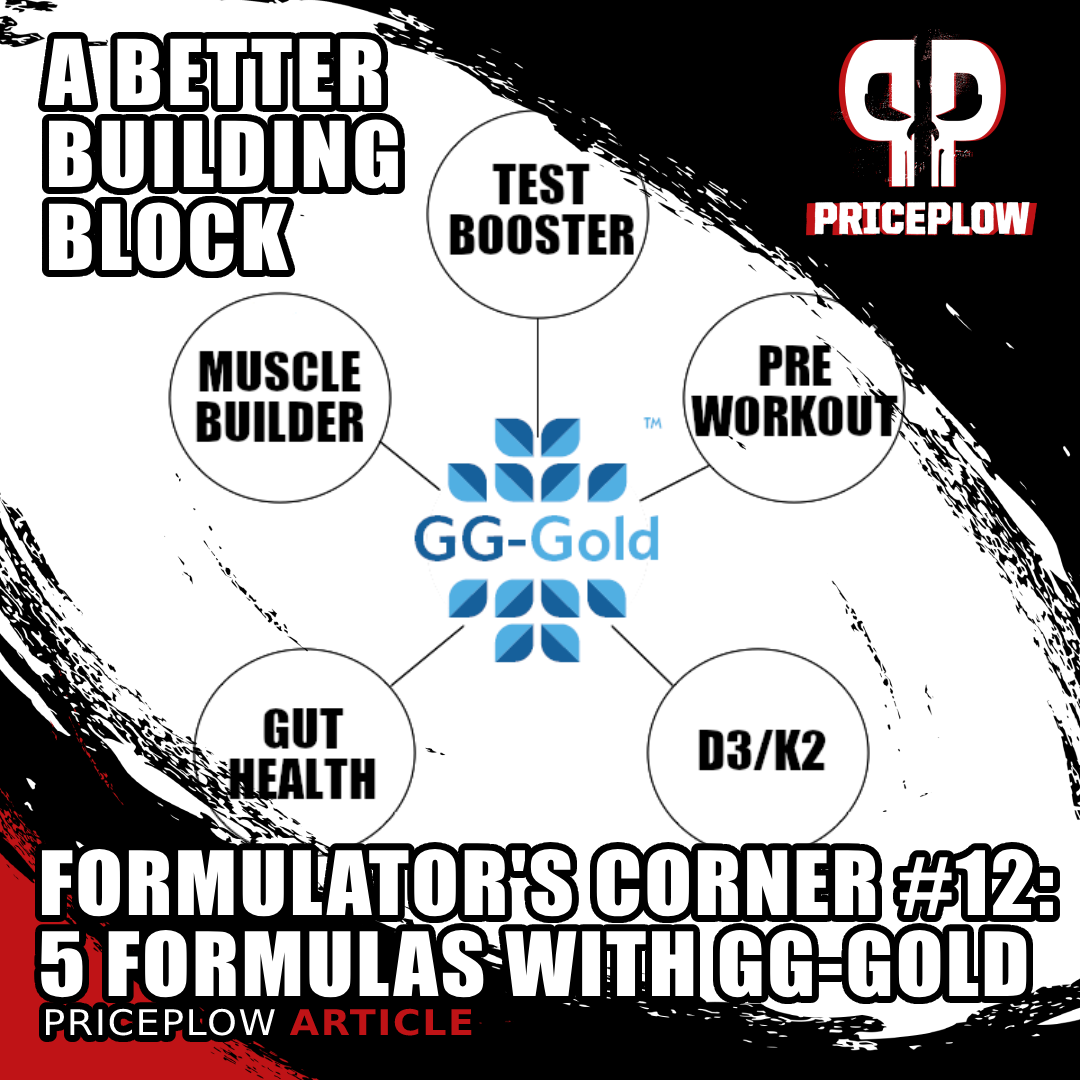


Comments and Discussion (Powered by the PricePlow Forum)